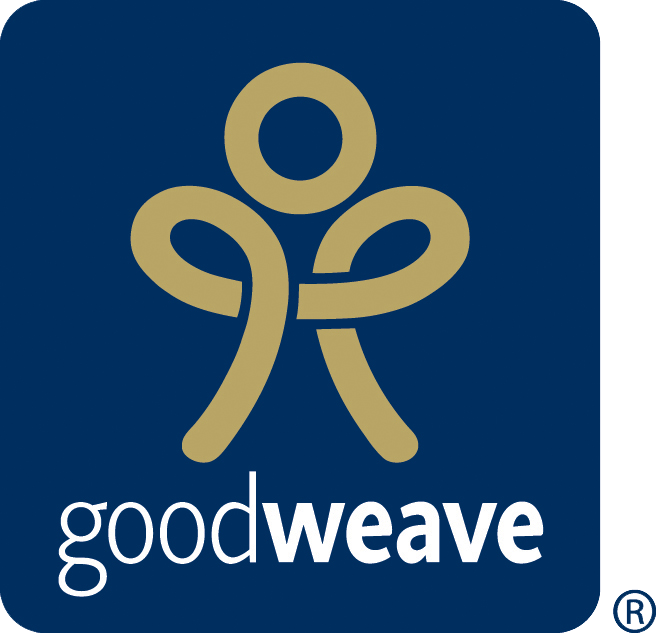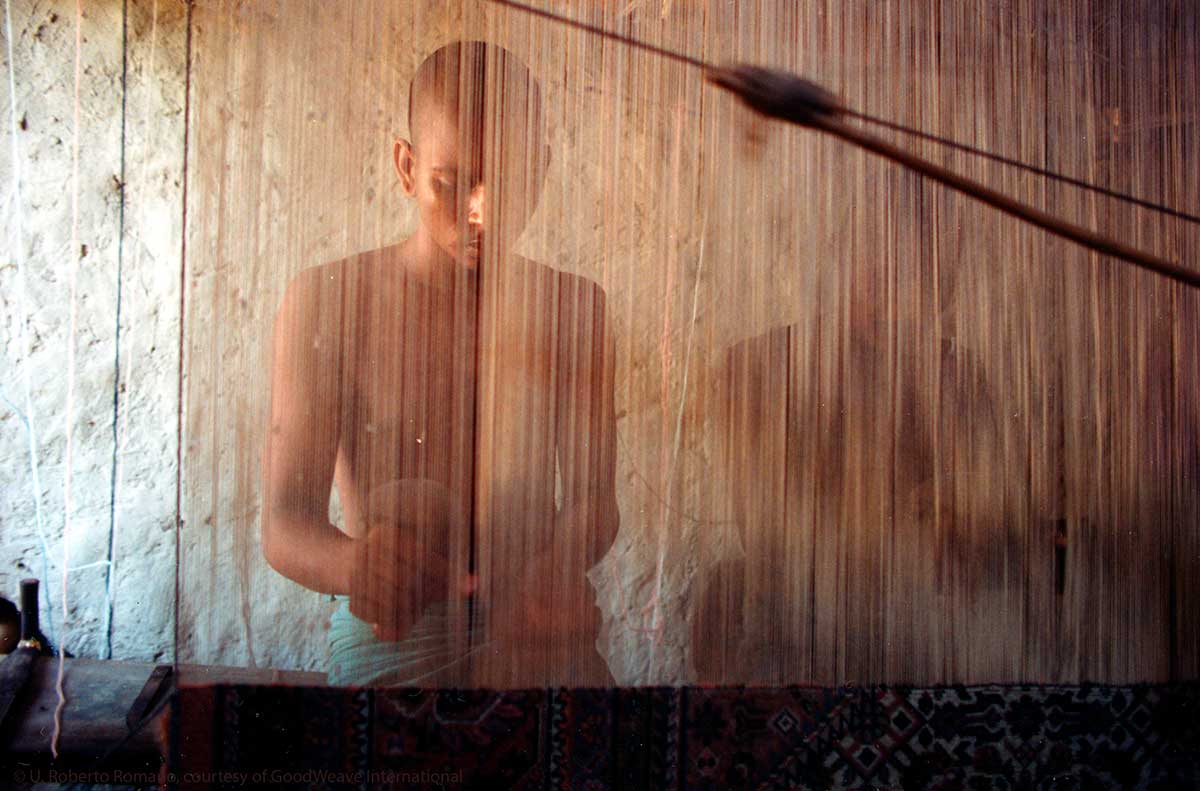ChangeSpace is a proud partner of GoodWeave, Goodweave certified rugs means that our rugs are made by adult artisans, not children. GoodWeave is ending child labor and offering educational opportunities to children in carpet weaving communities around the world. GoodWeave fulfills its mission by creating market demand for certified child-labor-free rugs, monitoring supply chains, rescuing and educating child laborers, and providing critical services for weaving families. To learn more visit GoodWeave
What does the GoodWeave label mean?
The GoodWeave label is the best assurance that no child labor, forced labor or bonded labor was used in the making of the certified product. When you choose the GoodWeave label, your purchasing decision also supports programs that educate children, provide critical services, and transform communities.
How are certified rugs produced?
GoodWeave certified rugs are produced by licensed exporters, who have agreed to produce rugs in accordance with the GoodWeave Standard, and allow unannounced inspections by GoodWeave. The GoodWeave Standard prohibits child labor, forced labor, and bonded labor, and requires full disclosure and transparency of the producer’s supply chain.
Producers also undergo a separate annual audit to document their performance against the Standard’s Progress Principles. The Progress Principles include broader workers’ rights such as freedom of association and collective bargaining, as well as no discrimination, decent working conditions, and minimizing negative environmental impacts in production.
GoodWeave certification labels are only issued to licensed producers selling products to licensed importers. Producers must first be approved by GoodWeave’s Certification Committee in order to be licensed and use the label.
What is GoodWeave’s relation to ISEAL?
GoodWeave is a full member of the ISEAL Alliance, making its certification label among the world’s most credible and robust. GoodWeave meets the criteria recommended by ISEAL to use when evaluating any label claim: The claim must be clear and free from misleading details. It is based on substantiated evidence. Its system is transparent and information about the claim is freely available and accessible. There are significant controls as to how the label is issued and used. GoodWeave is committed to these criteria and to ISEAL’s Codes of Good Practice which are seen as a global reference for developing credible standards.
How does GoodWeave support children?
GoodWeave is the only organization that rescues and educates child laborers found during supply chain inspections. Rescuing children from a life of servitude represents a monumental step toward giving them a better life, but it is just the beginning. In order to stem the tide of child labor, it is important to ensure that children from vulnerable worker communities are given access to education. GoodWeave sponsors the education of rescued and at-risk children in carpet-weaving communities, totaling 3,700+ to date. GoodWeave also operates daycare centers, informal schooling, and community initiatives to encourage education and prevent child labor.
What is GoodWeave?
For more than two decades, GoodWeave has refined a unique, market-based model to fight the use of child labor. The joined market forces fuel our work in cleaning up supply chains, rescuing and educating child laborers, and improving work for adults. Our system is holistic, and it works. Now we’re putting it to work in other sectors where children are being exploited—and making human rights an intrinsic part of the global marketplace.
What are the key issues with child labour?
Child laborers often forfeit the chance to ever begin school, giving them the highest illiteracy rates in the world. Victims are 5-14 years of age, and more than half of them, 85 million, are in hazardous work that spans mining, fishing, manufacturing, and agriculture. Some of these children have been kidnapped or sold, with the International Labor Organization (ILO) further estimating 5.5 million of them as bonded and slave laborers. Slavery, human trafficking, prostitution, and activities that directly harm the physical, mental, and moral well-being of a child are considered “Worst Forms of Child Labor.”
While corporate social auditing improves working conditions at “first tier” factories, the worst exploitation takes place outside of the factory where many layers of subcontracting (tiers 2-4) turn child labor into an invisible crime. Complex and shifting informal labor systems leave a large proportion of child labor unmonitored and unaddressed in hidden workplaces. Ending child labor is everyone’s business. Sometimes the sweat of children is literally woven into the products we buy every single day. Child labor taints global manufacturing supply chains across sectors–from carpets and garments to chocolate and tea.
In the carpet industry where GoodWeave has worked for over 20 years, “carpet kids” sit at looms for up to 14 hours per day, using sharp tools to weave carpets with no access to education. Some are trafficked to loom sheds far from home – often under threat of violence – to work off a family debt that can never be repaid on meager weaving wages.
What has GoodWeave achieved?
Since GoodWeave’s founding, more than 16,000 children have benefited from the organization’s education and rehabilitation programs, including 3,700 directly rescued from the looms. GoodWeave works with 140+ global licensees, importing certified rugs into 16 consumer countries




